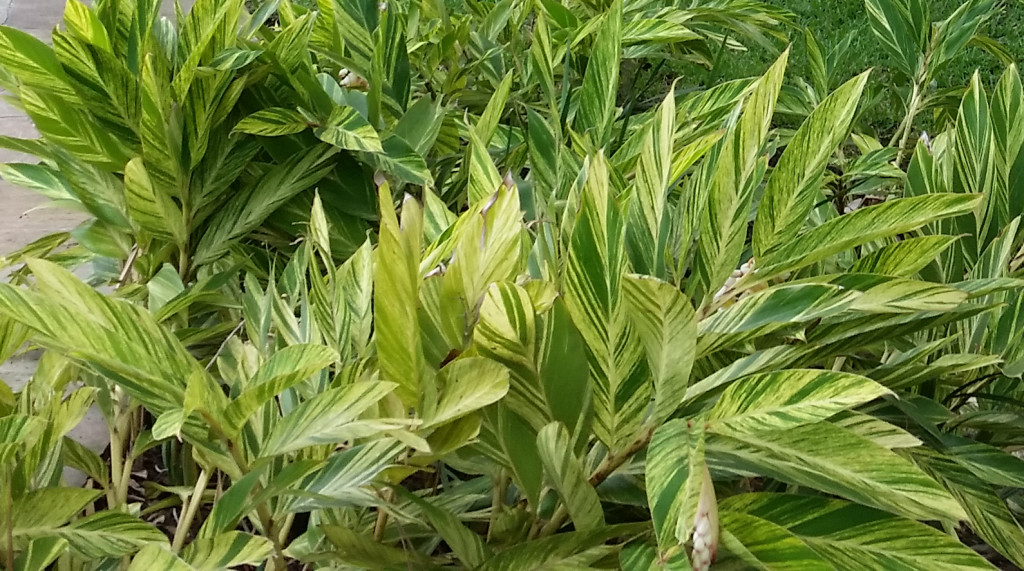Do you require a show stopper to set your yard apart from your neighbors? Variegated ginger’s striking, yellow and green striped form provides a perfect tropical look you’ve been searching for in your landscape. These unique plants will quickly fill in an area of your landscape, but be careful that you leave enough room for their vibrant and abundant growth.
A cousin of culinary ginger, Variegated Ginger (Alpinia zerumbet ‘Variegata’) boasts arching stalks of bright yellow and green-striped lanceolate leaves. Often referred to as Shell Ginger, it blooms in spring with white clusters of shell-shaped flowers with pink tips. These fragrant flowers are grow on the end of a stalk that rises from the middle of the plant. A rapid grower, Variegated Ginger will mature to 6’ tall and up to 12’ wide, although awareness of the rapid growth rate, spread, and how to maintain this plant can create a more reasonable 4′ tall by 5′-6′ wide growth.
This plant is not drought tolerant and enjoys a regular watering schedule with well-drained and regularly fertilized soil. Plant Variegated Ginger where it can receive up to 6 hours of sunlight each day with afternoon shade and take care not to water too late in the evening to avoid a particularly nasty fungus.
Due to its lack of cold tolerance, this herbaceous perennial is best kept in USDA hardiness zones 8-11. Variegated ginger can withstand a low temperature of 25 degrees Fahrenheit, so if using in the Dallas/ Fort Worth area you can apply a thick layer of mulch during the winter and as long as the soil doesn’t freeze, it should reappear in the spring.
Easily propagated, Variegated ginger’s roots can be divided every two years. A low maintenance plant, regular pruning is only needed to remove a dead leaf, when the flower stalks have bloomed out, or to maintain size. Take care not to plant it too close to other plants or each other. A spacing of four feet from trees, plants or houses is recommended. It is these rhizomes that allow the plant to spread and can lead to a wider growth rate than published in climates where it does not act as a perennial and die back to the ground (cooler climates than zone 8). You can dig up these rhizomes and store them, give them away, or discard them if your Ginger is traveling further than you prefer or if you would like to move it to another location where it will be easier to maintain.
Variegated Ginger’s ability to grow fast and provide contrasting pops of color makes it ideal for any tropical landscape. Keeping in mind its large size, it is best planted in groups, under palms or trees or to create a border under larger growing plants with smaller plants located in front of the Ginger. It can be used in large containers as a specimen but will need to be divided every few years to manage its size.

© HDG Landscape Design, 2016